Introduction
Welcome to the virtual outreach unit on rockets from The U.S. Space and Rocket Center! We would like to thank the Northrop Grumman Foundation for their generosity in sponsoring the development of this unit. In this module you will find many resources that will help you provide an exciting and educational experience for your students. From introductory concepts, to career connections, in addition to activities and lesson plans, we hope you find everything you need for a successful teaching experience. Please see below for a detailed listing of the unit:
- Pre-Activity Resources – Links to articles and videos that provide introductory information about rockets; how they work and what they do.
- Interview with a Rocket Scientist – This video highlights the career and educational experiences of an aerospace engineer.
- Activity – This document provides background information and instruction for building and launching three types of simple rockets. There is also a video that demonstrates the activity.
- Continue Learning – Links to help continue engagement. The links include videos, and articles, as well as additional activities.
Pre-Activity Resources
How do we launch things into space? (NASA Space Place)
How Rockets Work (Science ABC)
Rocket 101 (National Geographic)
Subject Matter Expert
Activity
Space is considered anything over 63 miles high. It doesn’t seem like it is very far, but getting there is hard work. Scientists and engineers work together to determine the most efficient fuels to burn, design the most powerful motors and engines, and build the most aerodynamic rockets to fly. In addition, all of this happens while keeping payload safety in the forefront. NASA is building the next great rocket called the SLS, or Space Launch System, that will take us to the Moon, Mars and beyond. This rocket is 322 feet tall and will safely launch up to 4 astronauts at a time using both Solid Rocket Boosters and RS-25 Engines for power. This combination produces over 8 million pounds of thrust. Thrust is the force that allows the rocket to overcome Earth’s gravity and enter orbit. Part of the scientific principles that explain how thrust works are found in Newton’s 3 Laws of Motion. Other theories of aerodynamics, such as Bernoulli’s principle, explain why control surfaces like fins and nosecones affect the way a rocket behaves. In addition, concepts of physics, including center of mass and center of pressure must be taken into consideration to ensure rocket stability. Download "Rockets" activity (pdf)
This curriculum is made possible by the generous support of the

Continue Learning
Saturn V Tribute (remyworldpeace)
STS 135 – Final Space Shuttle Launch (ESA)
Science Never Stops- F-1 Engines: (U.S. Space & Rocket Center)
Science Never Stops- Newton’s Noodles: (U.S. Space & Rocket Center)
Science Never Stops- Space Launch System (U.S. Space & Rocket Center)





